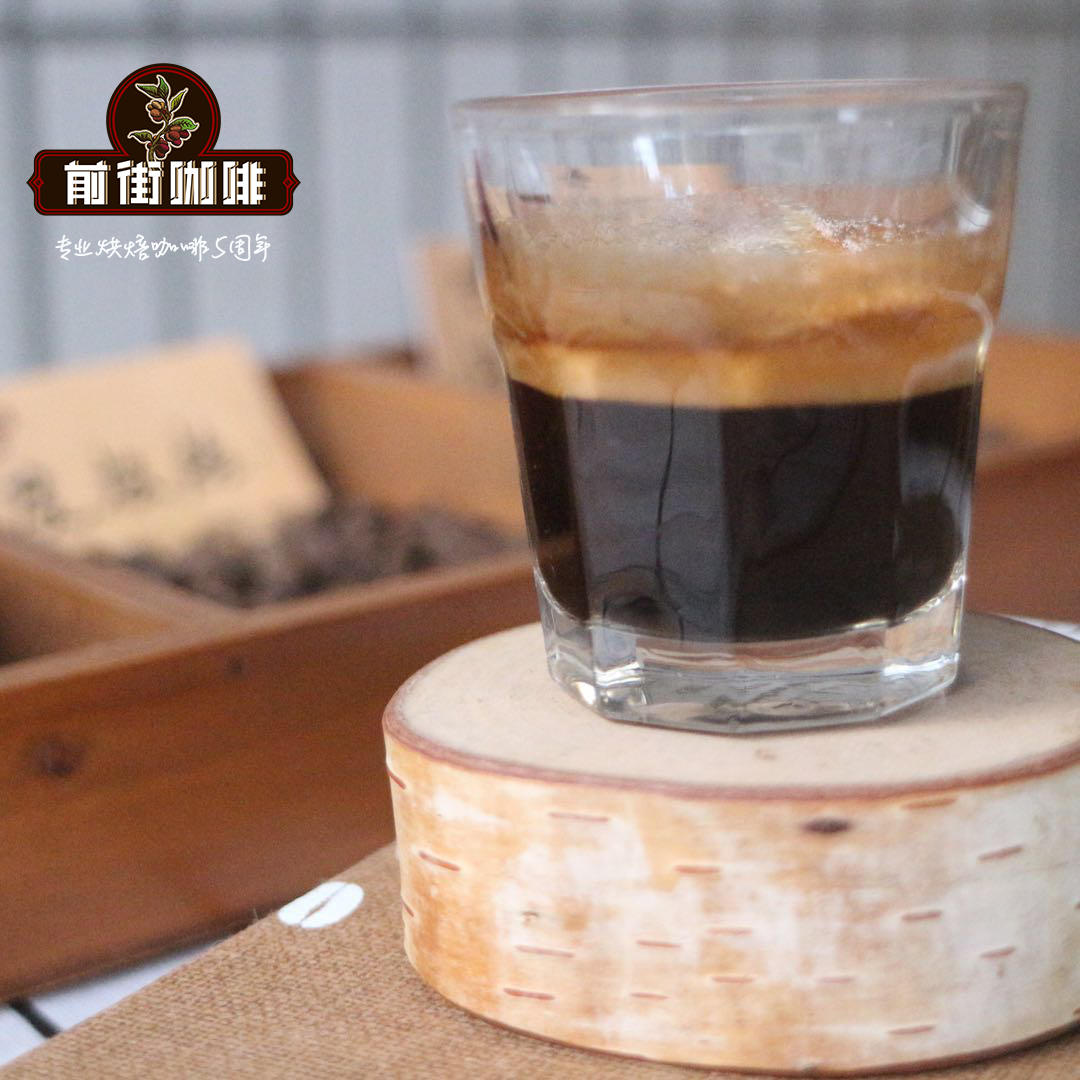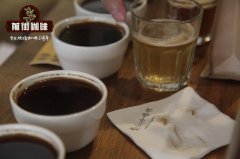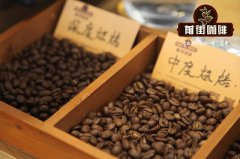Deep-roasted coffee beans are very oily. _ deep-roasted coffee beans roast experience _ deep-roasted coffee beans are a good brand.

Professional coffee knowledge exchange more coffee bean information please follow the coffee workshop (Wechat official account cafe_style)
Definition of ▲ baking
The so-called coffee roasting (coffee roasting) refers to the process that through heating the raw beans, a series of physical and chemical reactions take place inside and outside of the coffee beans, and in this process, the sour, bitter, sweet and other flavors of the coffee are formed, forming mellowness and hue, and transforming the raw beans into dark brown beans.
The importance of ▲▲ baking
Among the factors affecting the taste of a cup of coffee, raw beans account for 60%, roasting accounts for 30%, and extraction accounts for 10%. Good roasting can maximize the personality of raw beans and minimize the occurrence of defective flavors. on the contrary, improper roasting will completely destroy good beans. As the heating, time, and temperature control in the baking process is very difficult to grasp, baking technology is a very complex technology, so the importance of baking is more prominent.
▲▲▲ baking degree
From the point of view of the baking degree, the deeper the baking degree, the stronger the bitter taste; the lighter the baking degree, the stronger the sour taste. The choice of baking degree depends on the characteristics of the coffee bean itself. for coffee beans with strong bitterness and light sour taste, they generally choose a moderate and shallow roasting degree.
△ (Light)
The green taste of raw beans
The most mild fried culture, no fragrance and concentration to speak of, the beans are not ripe, not suitable for grinding and drinking. It's usually used as an experiment.
△△ (Cinnamon)
Strong sour taste
Also known as cinnamon baking, for the general popular degree of frying.
The color of beans is quite similar to that of cinnamon, so it is also called cinnamon baking and its sour taste is aggravated. It is favored by people in the western United States.
△△△ (Media)
Delicious shallow and medium baking
The color deepens, easy to extract the original taste of coffee beans, mellow, sour and delicious.
△△△△ (High)
Slightly sour and bitter taste neutralized
Coffee has a stronger flavor and a lighter sour taste, which is the general roasting method of coffee beans.
Suitable for coffee such as Blue Mountain and Kilimanjaro. It is loved by Japanese and Nordic people.
△ (City)
No acid, unique fragrance
Also known as city baking. Coffee suitable for Colombia and Brazil is very popular in New York.
△ (Full City)
Bitterness with high-quality sweetness
Also known as city-wide baking, suitable for brewing iced coffee. No sour taste, mainly bitter taste, bitterness will be aggravated.
It is used for iced coffee and is preferred by people in Central and South America.
△ (French)
Bitter oil together.
French baking method, slightly black color, strong bitterness, but also ooze oil, bitterness and concentration are deepened. Coffee used for steam pressurizer.
△ (Italian)
Carbonization is extremely bitter.
Also known as Italian baking, the deepest baking degree, the beans are black and bright, the surface is oozing oil, the bitterness is very strong. At this stage, coffee beans have been seriously carbonized, and it is difficult to distinguish the taste of one kind of coffee bean from another.
For Italian steam pressurized coffee.
●: why does the color of coffee change? ]
△
Coffee beans are light green and turn brown when roasted.
This baking characteristic brown mainly comes from the brown pigment produced by "oligosaccharides, amino acids, chlorogenic acids".
The so-called brown pigment, "does not refer to a color or ingredient" but a general term for the many ingredients that make coffee different colors.
△△
Brown pigments can be classified according to molecular size.
Light baking mostly produces small molecular pigments, and the total amount of pigments increases gradually with the deeper the baking degree.
The proportion of macromolecular pigments will also increase.
Light baked beans mostly contain small yellowish pigments, which are chemical reaction products in the early stage of baking.
It is a substance produced by the reaction of oligosaccharide thermal decomposition with chlorogenic acid.
△△△
If you continue baking, the oligosaccharides will be caramelized to produce caramel pigments.
When oligosaccharides react with amino acids to produce molasses pigment, a slightly larger reddish-brown pigment occurs.
The reaction produced by molasses pigment is called Mena browning reaction, which is a very important kind of food chemical reaction.
The color and flavor of toast and the color of soy sauce are all the result of Mena's browning reaction.
△△△△
"into a dark brown pigment with more than a hundred times the size of the molecule."
If you continue to bake, proteins and polysaccharides are also added.
This pigment is actually one of the elements that make up the bitterness of coffee.
It is generally believed that the larger the molecule of the pigment, the stronger the bitterness of the coffee and the heavier the taste.
Therefore, the intensity and taste of bitterness will change with the degree of roasting of coffee, which is affected by the changes of these pigments.
Picture
What are the taste characteristics of light-roasted, medium-roasted and deep-roasted coffee beans? ]
Generally speaking, the shallow cultured beans will have a light and refreshing flavor, and the flavor is very rich.
Flower fragrance fruit acid some tea tastes are the flavor expression of this kind of bean.
On the other hand, medium baking is more "balanced" with both refreshing flavor and thick taste.
Deep-roasted coffee beans are more similar to their taste, and they usually have a strong flavor.
Such as smoke, chocolate, wood incense will be the flavor of this kind of beans. And it will be accompanied by a thick taste.
The classification of the three baking methods is only a very general method.
In fact, the baking depth is affected by many factors, such as the style of the bean baker.
This answer is only a general statement. The barista will adjust the baking curve according to the characteristics of each bean.
But you know,
"will the flavor of the pot be different by one degree or two seconds?" (scared to eat)
● fifth-order baking process small secret △
1. Drying
When the raw bean is heated, the water vapor in the raw bean will evaporate, and the raw bean will turn white from green at about 135 degrees Celsius.
two。 dehydration
With the heating, the raw beans change from green to light yellow, and when the temperature reaches about 160 degrees, the aroma of baked grain will be emitted. After continuous heating, the beans will turn light brown.
3. An explosion
After about 190 degrees dehydration is completed, a burst occurs due to the rupture of the cell wall caused by internal thermal expansion, and a series of thermal decomposition reactions occur inside the beans, in which the caramelization brings the sweetness, dark brown and mellowness of the coffee beans. the explosion lasts about a minute and a half.
4. Second explosion
As the heating goes on, it enters the "second explosion", and a more violent reaction will occur inside the beans. And give off a lot of heat. With the end of the second explosion, the raw bean has basically turned black, the bean body has expanded to 1.5 times that of the original, the surface is oily, and the weight is reduced to 12%, about 20%.
5. Stop it
Baking usually ends about a minute after the second explosion, when the temperature reaches 200 degrees, which is a deep French or Italian baking, which may cause the coffee beans to ignite spontaneously when the temperature exceeds 230 degrees Celsius.
● Deep-baked Coffee beans Brand recommendation
The deep-roasted beans of Qianjie Coffee: Honduran Coffee, Brazilian Red Bourbon Coffee and Indonesian Manning Coffee are fully guaranteed in brand and quality. And more importantly, the performance-to-price ratio is extremely high, a pack of half a pound 227 grams, the price is only 80-90 yuan. According to the calculation of 15 grams of powder per cup of hand-brewed coffee, 15 cups of coffee can be made in a bag, and each cup of coffee costs only about 6 yuan, which is very cost-effective for coffee shops to sell dozens of yuan a cup.
Qianjie coffee: Guangzhou bakery, the store is small but a variety of beans, you can find a variety of unknown beans, but also provide online store services. Https://shop104210103.taobao.com
Important Notice :
前街咖啡 FrontStreet Coffee has moved to new addredd:
FrontStreet Coffee Address: 315,Donghua East Road,GuangZhou
Tel:020 38364473
- Prev

Flavor Comparison of Coffee Beans with Different Roasting Degree_Characteristics of Deep Roasted Coffee Beans_Deep Roasted Coffee Beans are Very Oily
Professional coffee knowledge exchange More coffee bean information Please pay attention to coffee workshop (Weixin Official Accounts cafe_style) When you see a wide variety of coffee products on the shelf, or taste in a cafe, if you don't know what to choose today, you can roughly distinguish the flavor from the roasting degree, and then slowly try different origins, pick a cup of coffee with your own style!● Sweet flowers and fruits
- Next

How to distinguish coffee roasting degree_What are the characteristics of deep roasted coffee beans_Deep roasted coffee beans must be very oily
Professional coffee knowledge exchange More coffee bean information Please pay attention to the coffee workshop (Weixin Official Accounts cafe_style) American Coffee Association (SCAA) Roasting degree standard This standard uses infrared caramelization detector technology (Agtron) to measure the color of coffee beans to determine the roasting degree of coffee, and the color is divided into eight equal parts from light to dark to make eight standard color blocks for coffee industry
Related
- Beginners will see the "Coffee pull flower" guide!
- What is the difference between ice blog purified milk and ordinary milk coffee?
- Why is the Philippines the largest producer of crops in Liberia?
- For coffee extraction, should the fine powder be retained?
- How does extracted espresso fill pressed powder? How much strength does it take to press the powder?
- How to make jasmine cold extract coffee? Is the jasmine + latte good?
- Will this little toy really make the coffee taste better? How does Lily Drip affect coffee extraction?
- Will the action of slapping the filter cup also affect coffee extraction?
- What's the difference between powder-to-water ratio and powder-to-liquid ratio?
- What is the Ethiopian local species? What does it have to do with Heirloom native species?

